 Senjoyo spring in Semarang district, Central Java
IUWASH
Senjoyo spring in Semarang district, Central Java
IUWASH
 Senjoyo spring in Semarang district, Central Java
IUWASH
Senjoyo spring in Semarang district, Central Java
IUWASH
Look no further than Indonesia to see the impact of climate change across a wide spectrum. It is prolonging dry seasons and making rainfall more unpredictable here. Rising sea levels have inescapable consequences in an archipelago, and a staggering 80,000 kilometers of coastline around more than 17,000 islands make Indonesia very vulnerable to the impacts of climate change.
Changes in weather patterns are already affecting everyday life.
On the islands of Sumatra and Java, places naturally lush with vegetation, rivers and streams are beginning to dry up, exacerbated by heavy deforestation and expanding urban areas.
When it does rain, it is often more intense now and causes flooding in downstream populated areas. USAID’s Indonesia Urban Water, Sanitation and Hygiene (IUWASH) program has promoted a simple way to collect this rain and return it to groundwater aquifers: infiltration ponds.
These ponds are 2 meters deep and wide, capturing water and allowing it to seep through and collect in the ground. Each has a removable cement cover, but is fed by a small, open channel that allows water to pour inside. Rainwater that might otherwise be partly lost as runoff into streams and rivers is trapped instead, increasing the amount of water infiltrating the surrounding soil and contributing to recharging aquifers.
Underground aquifers store water in the ground and supply it during dry periods. Each time an infiltration pond fills, it provides about 8,000 liters of water to the subsurface, helping to capture fresh water for human and agricultural consumption.
The ponds are one of several techniques being promoted by USAID to replenish essential springs and aquifers, and make communities more resilient to climate change. The project also supports local authorities to ensure infiltration ponds and other techniques are applied as part of a multipronged strategy to produce lasting benefits.
“We surveyed the catchment areas for 20 water utilities and identified many areas in Indonesia that are experiencing higher temperatures and reduced rainfall. We are working in areas where the streams are carrying less water—and demand is increasing due to population growth,” said Agus Hernadi, a climate change adviser for IUWASH.
The infiltration ponds are being dug in mountainous areas where the rainfall and runoff are the highest. They are also being situated in areas where they will benefit the surrounding communities—by feeding shallow wells or recharging municipal water supplies—helping to keep water flowing to taps in homes.
In Salatiga and Semarang cities in Central Java province, local citizens and area water utilities rely on Senjoyo and Ngablak springs for their water supply. However, due to the shortened rainy season in recent years, the two springs are producing less and less water.
“In Semarang, we had been working with the water utility since 2012, and they told us that the spring waters were diminishing. We identified the catchment areas and the best locations for infiltration ponds,” said Hernadi.
Alifah Lestari, regional program coordinator at IUWASH, said the project successfully conducted similar efforts in Sumatra and East Java. “We proposed the infiltration ponds because they are an affordable way to capture rain and return it to the groundwater before it runs off into rivers and streams,” said Lestari. “We worked with a local NGO, Serikat Paguyuban Petani Qarryah Toyyibah (SPPQT), to construct the ponds, and we also sought support from the Coca-Cola Foundation of Indonesia (CCFI). We had worked with CCFI before on water and sanitation projects and we thought they might be interested in this project.”
Agus Priyono, program coordinator at CCFI, said the ponds fit well into Coca-Cola’s global project to become “water neutral,” or, as the company announced in 2012, “to return to communities and to nature an amount of water equivalent to what we use in all of our beverages and their production.”
“We thought this was the most effective strategy for Coca-Cola,” said Priyono. “It is simple, low-cost and easy to replicate. We also liked that it would be easy for the villagers to maintain.”
So far, the project has built over 900 ponds in the Salatiga and Semarang catchment area in Central Java, as well as over 700 ponds to replenish catchments in North Sumatra and around 1,700 ponds in East Java.
Water All Year Round
Puji Rahayu has been the head of Patemon village for three terms and first heard about the infiltration ponds when approached by the local NGO, SPPQT.
“Many of us remember that, only two decades ago, the weather was cooler here. Now it’s hotter and the rainy season is shifting and this causes problems for our farmers,” she said. Problems include knowing what crops are best to cultivate and when to plant them.
“I invited SPPQT to join a meeting of our village officials to explain about the ponds and how they worked. At first, not many were willing, but once people saw the benefits, many more came forward to offer their land,” she said.
Suwarno, a farmer who also lives in the village and like many Indonesians uses only one name, says he was initially skeptical. But he became convinced when he saw the soil didn’t harden and crack during the dry season.
“The infiltration ponds have brought real changes for the farmers in our community,” he said. “Now the soil stays black and fertile even during the dry season and we can grow more crops. Until a few months ago, I wasn’t 100 percent convinced that they could catch the water, but I can see now that my cassava is growing better than usual.”
Rahayu says that now there is widespread support for the project and the village has budgeted to continue building another 200 ponds with its own funds.
“I’ve been promoting the ponds to neighboring villages, and I’m inviting private companies to join us and help expand the program. We now have a village regulation which requires all households to conserve water resources,” she added.
Ann Usher is with TRG.
Switching to Cacao Is Saving Vital Sumatran Rainforest
By Anne Usher and Cassandra Graham
High in the mountains of Aceh province in northern Sumatra, farmers are learning to cultivate small plots of land with a plant that promises to enrich them and help save rainforests.
The task is urgent: They live along the boundary of one of the world’s most biologically rich landscapes, Gunung Leuser National Park, a UNESCO World Heritage Site that is one of the richest remaining expanses of tropical rainforest in Southeast Asia, and the last place on earth where the Sumatran elephants, tigers, rhinos and orangutans can be found in one area.
These dense forests and others like them are threatened because farmers, loggers and palm oil companies are clearing the forest to generate income.
USAID’s Indonesia Forestry and Climate Support project is helping to reduce deforestation with community agreements. Under these agreements, villages receive training on how to improve yields and harvest if they agree not to clear any more forest. By learning how they can generate more income from their existing plots, farmers are less likely to expand their plots into the forest.
Syahbudin, a young father, said cacao trees were already on his family’s 2-acre plot of land when he bought it three years ago.
“But I didn’t know how to grow it,” he said. With USAID’s assistance, he learned how to prune and graft new branches on trees, use cow manure as fertilizer, and encourage the growth of cacao buds to get as much fruit as possible from one tree.
“Before, my trees would produce cacao fruit with small seeds inside. And they had thick skin,” Syahbudin said. “They now have bigger seeds and the skin’s thinner.” Because of these improvements, he harvests about 27 kilos of cacao seeds each week instead of 6.
“The training is part of a Community Conservation Livelihood Agreement signed by the village,” said Nassat Idris of USAID/Indonesia’s Environment Office. “The agreements are helping to preserve the landscape of Gungung Leuser National Park—while at the same time improving livelihoods.”
With cacao, 1 hectare of land—about 2.5 acres—if intensively farmed, can support a family. However, farmers planting palm oil need 2 hectares to see a sufficient return on their investment. Cacao also contributes less to soil depletion, producing well even in the dry season.
“This program allows us to protect the buffer zone outside the park—vital areas with some forest cover—and also work with enforcement agencies within the area,” said Idris.
Syahbudin’s village, Paya Kumer, now has a demonstration nursery. “The farming is done outside forest land, so the cacao can only be grown by families who already have plots of land and promise not to cut down trees,” said Sariandi, a farmer and trainer. So far, villagers have sown 3,000 tree seedlings.
“I support this program and hope it can be continued because it brings benefit to the community,” said Salim, village head of Paya Kumer.
The project is making cacao the main business in this area—matching rice production.
“This conservation project has made people more aware of the need to preserve the environment,” said Idris. “Before, if farmers wanted to grow more trees, they would just open more land. Now they are intensifying production instead.”
Syahbudin said he plans to double the size of his planted area—but not cross the boundary into the protected rainforest. “I’m using the extra money to send my son and daughter to high school.”







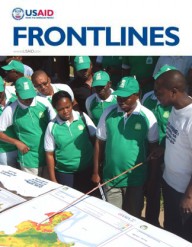

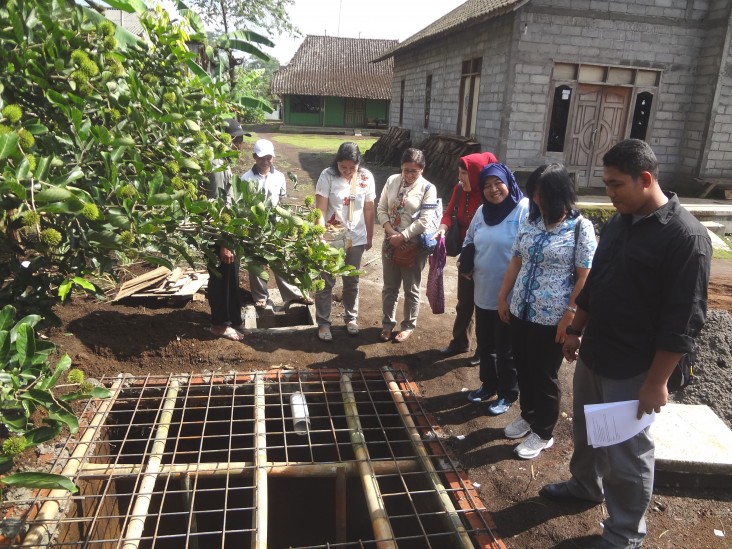
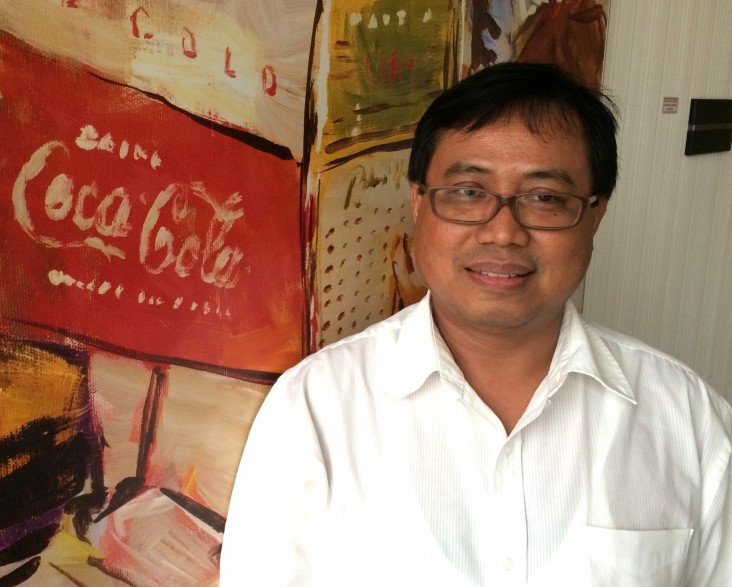
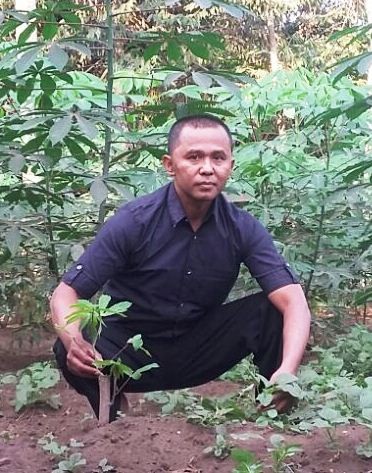
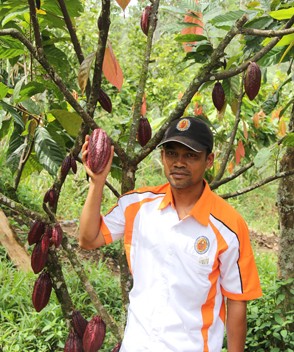
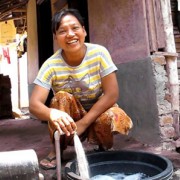
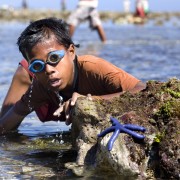
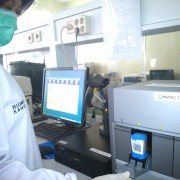
Comment
Make a general inquiry or suggest an improvement.